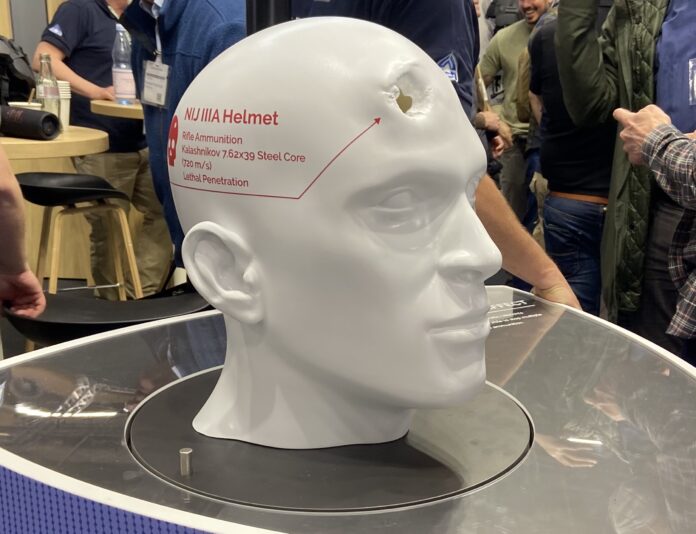Ulbrichts Protection is an Austrian company that manufactures ballistic helmets. They divide their focus into two divisions, the automotive division that manufactures emblems for car brands including Mercedes, Audi and Volkswagen, with the other division focused on personal protection.
Ulbrichts is a family-owned company, with locations in Austria, Germany and the Czech Republic. BodyArmorNews.com had the opportunity to speak with Mr. Thomas Poandl, who is responsible for Marketing and PR for the protection division of the company.
Important clients use ballistic helmets
One of the areas Ulbrichts focuses on is providing helmets to police officers in the field who are often the first ones to respond to the report of a crime. As the market leader in Germany, Ulbrichts have supplied these helmets to 80-85% of the market.
Their modular solutions have also been used for more than 10 years by the German special forces. They also supply rifle protection helmets to the Ministry of the Interior in Germany, which is rated VPAM 3 helmets with trauma values analog to HVN2009 below 25 joules and extra light true handgun protection helmets starting at 1.2kg according to VPAM3 HVN2009 and is capable of stopping a Kalashnikov lead core.
Preventing injuries from bullet trauma
Since manufacturing their first helmets 30 years ago, Ulbrichts have focused on delivering ‘True Protection’. Their helmets focus not only on stopping bullets, but also on preventing severe back-face deformation. This is achieved as the company tests their helmets according to VPAM ballistic standards.
With the standardized test procedures and measurement of back-face deformation allowed by this standard, Ulbrichts Protection make sure that back-face deformation never exceeds 25 Joules. Any value exceeding 25 Joules is generally understood to be a lethal trauma, which is not survivable.
“The main difference between our ballistic helmets and the classic NIJ IIIA Certified helmets that you find around the globe,” Mr. Poandl said, “is that the NIJ IIIA helmets are produced for shrapnel protection and for stopping ammunition, not for trauma prevention. “
Lightweight ballistic helmets
Ulbrichts use either titanium or titanium hybrids to manufacture their helmets. “I would like to say we reinvented the helmet,” Mr. Poandl said, “Between the design of the old titanium helmets and the newest generation, we saved around one kilogram.
“We offer products with the same weight of a ballistic helmet you could wear two years ago while doubling their protection level. We now have rifle-rated VPAM 6 helmets with trauma values analog to HVN2009 below 25 joules.”
Comfort and modularity
While covering the important values such as stopping projectiles and preventing trauma, Ulbrichts also looks to focus on the comfort of the wearer. Ulbrichts run these helmets with the ‘UniSize’ system, the ‘Best Balance’ liner/suspension system.
“The helmets are close to and centered to your head, which you can adjust to your preference,” Mr. Poandl explained, “So it gives you the best wearing comfort. On the other hand, it also gives you the freedom to choose your helmet in one helmet size, covering all head circumferences from 48 to 62cm. So, one size fits all.”
The user can also combine these helmets with Ulbrichts’ other products. “You can combine them with our visors that we produce in house with a quick-mount solution,” Mr. Poandl said, “You can fix the visors to the helmet in two seconds. Just a click and you’re done.”
Preventing secondary shrapnel
“As another part of reinventing the helmet, we got rid of the bolts,” Mr. Poandl added,
“There are no screws on the outside of the helmet anymore. Every bolt can become secondary shrapnel when you shoot at it.”
“When it comes to protection against rifles, the projectile is travelling at such a high velocity with kinetic energy. For example, with the Kalashnikov 7.62x39mm, the steel core carries a velocity of about 2000 J. It’s so hard to stop it and harder to prevent trauma. So, you have to get rid of everything that could possibly become secondary shrapnel.”






